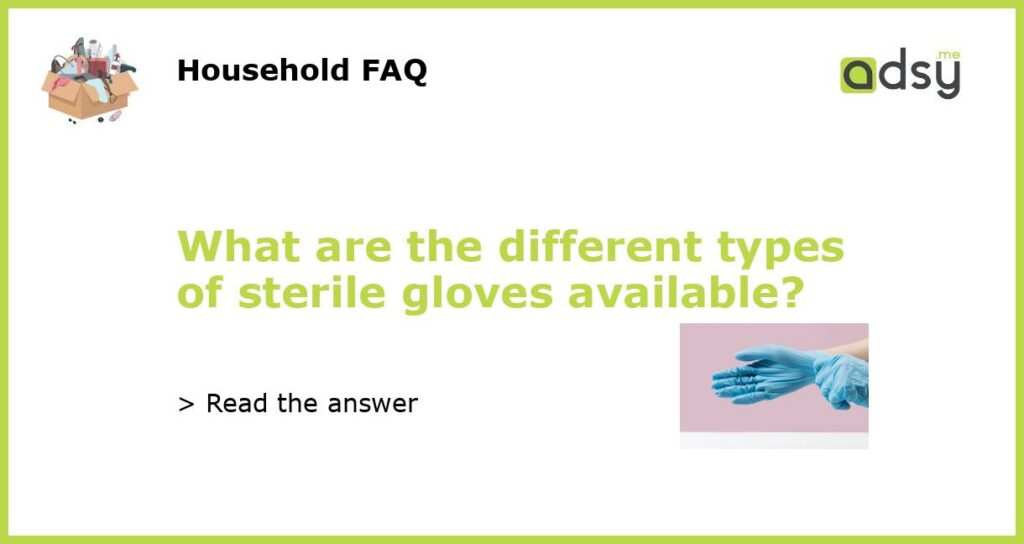Sterile gloves: An essential part of medical practice
Sterile gloves are a critical component of medical practice, providing a barrier between healthcare professionals and patients. These gloves are designed to prevent the transmission of bacteria, viruses, and other microorganisms, protecting both the healthcare worker and the patient. There are several different types of sterile gloves available, each with its own unique characteristics and benefits. In this article, we will explore the different types of sterile gloves and their uses.
Latex gloves: Widely used and highly elastic
Latex gloves were one of the first types of sterile gloves to be used in medical settings. Made from natural rubber latex, these gloves are widely used due to their superior elasticity, comfort, and fit. Latex gloves have excellent barrier properties, protecting against pathogens and contaminants. However, it is important to note that latex allergies are common, and some individuals may experience allergic reactions when using latex gloves. For those with latex allergies, alternative glove options must be considered.
Nitrile gloves: A suitable alternative for latex allergies
If a healthcare worker or patient has a latex allergy, nitrile gloves are an excellent alternative. Nitrile gloves are made from a synthetic rubber material that mimics the properties of latex. These gloves offer similar elasticity and fit and provide an effective barrier against pathogens. Nitrile gloves are also resistant to chemicals and punctures, making them highly suitable for medical procedures that require additional protection. They are available in various thicknesses and sizes to suit different needs.
Vinyl gloves: Cost-effective and comfortable
Vinyl gloves are another option for sterile gloves, providing a cost-effective and comfortable solution. Made from polyvinyl chloride (PVC), these gloves are lightweight and offer a loose fit. Vinyl gloves are suitable for low-risk procedures that do not involve exposure to potentially infectious materials. However, they have a slightly lower barrier quality compared to latex or nitrile gloves. Vinyl gloves are commonly used in non-sterile medical settings, such as laboratory work and food handling.
Neoprene gloves: Excellent chemical resistance
Neoprene gloves are a specialized type of sterile gloves that offer excellent chemical resistance. Made from synthetic rubber, neoprene gloves provide protection against a wide range of chemicals, including acids, solvents, and oils. These gloves are commonly used in laboratory settings, where exposure to hazardous chemicals is a concern. Neoprene gloves are also puncture-resistant, making them suitable for high-risk procedures. However, they may not offer the same level of elasticity and fit as latex or nitrile gloves.
Polyisoprene gloves: Combining latex-like properties with low allergy risk
Polyisoprene gloves are a newer type of sterile gloves that offer a combination of latex-like properties and a reduced risk of allergic reactions. They are made from a synthetic form of latex that is free from the proteins responsible for latex allergies. Polyisoprene gloves provide excellent elasticity, comfort, and fit, making them a popular choice for healthcare professionals. These gloves are suitable for a wide range of medical procedures and are comparable to latex gloves in terms of barrier quality.






